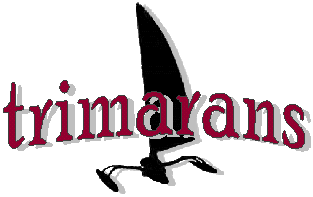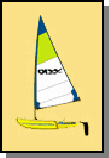 |
 |
 |
 |
 |
 |
 |
 |
 |
 |
 |
 |
 |
 |
 |
 |
 |
 |
 |
 |
 |
 |
 |
 |
 |
 |
 |
 |
 |
 |
 |
 |
 |
 |
 |
 |
 |
 |
 |
 |
 |
 |
 |
 |
 |
|
|
|
|
|
|
|
|
|
|
|
|
|
|
|
|
|
|
|
|
|
|
|
|
|
|
|
|
|
|
|
|
|
|
|
|
|
|
|
|
|
|
|
|
|
|
 |
|
|
|
 |
|
|
|
|
|
 |
|
|
|
|
|
|
|
 |
|
|
|
|
|
|
|
This website is a rough version of what will be a personal refernce website for the Windrider 10 trimaran.
Please check back later for the finished version, but you're welcome to browse in the meantime.
|
|
|
|
|
|
|
|
|
|
|
|
|
|
Loading the WR-10 & Transporting in a Small Truck
|
|
|
|
|
|
|
|
|
|
|
|
The ads say that the WR-10 can be transported in the back of a trucků
...but that's a real challenge in my short-bed Toyota - with a truck bed cap.
Using an inexpensive bed-extender, I have developed a successful
step-by-step procedure to load and transport my WR-10.
|
|
|
|
|
|
|
|
|
|
 |
|
|
|
|
|
There are three devices that make easy solo-handling of the WR10 capable: Ramps, a homemade dolly, and a truck bed extender. The ramps and extender were previous purchases for other jobs around the house. (The extender came via Harbor Freight at $21.95 sale price.)
The original version (left) of my homemade dolly used recycled golf bag wheels. Later versions used bicycle wheels - the additional height allowed the WR10 to be tilted more severely without the threat of dragging the nose through mud or rocks.
|
|
|
|
|
|
|
|
|
|
|
|
|
 |
|
 |
|
|
|
 |
|
 |
|
|
|
|
|
|
|
|
|
|
|
|
|
|
|
Wheel dolly: A swimming pool "noodle", a 3' metal rod, an end-cap, two large washers, two ball-bearing wheels, and a rubber cork (not shown). The rubber cork is placed on the removeable" end of the dolly, to hold the wheel in place.
With the removeable wheel off, the dolly easily slips through the crossbar receiver tube. Then replace the wheel and cork. I also slip a rope through the rudder pin's receiver as a carrying handle.
The bed extender is placed in the receiver, and its crossbar is in the lowest position to allow the ramps to be placed against the tailgate. The ramps are spaced to accommodate the wheel dolly. The Windrider hull, with the dolly still attached, fits between the two tire wells.
|
|
|
|
|
|
|
|
|
|
 |
|
|
|
 |
|
|
 |
|
|
|
|
|
|
|
|
|
|
|
|
|
The space created by lifting the extender's crossbar is just right for the two ramps. The ramps fit between the two wheels of the dolly, and can be secured to the bed extender.
The akas are placed with the writing on the inside. This allows to curves to fit the shape of the hull a little better AND prevents the crossbar receivers from rubbing against the hull.
Using a few bungee cords and a length of rope, the boat and akas are secured. The boom and the two Windrider crossbars are also placed inside the truck bed.
|
|
|
|
|
|
|
|
|
|
|
|
Even though I tried to calculate how large the WR-10 would be, I was still a little surprised at how much still stuck out of the back. That's about the time I realized a WR-10 isn't 10 feet long, but 10' 11". No big deal, since there would still have been a lot of hull hanging out the back - but 11" less would've made for a smaller surprise. I secured red flags to the bed extender and the end of the mast (placed atop the truck cap). Just to play it safe, I also added a few reflectors.
|
|
|
|
|
|
 |
|
|
|
|
|
|
 |
|
|
|
|
|
|
|
|
|
|
|
|
When I bought the WR-10, I was traveling cross-country,
and needed the bedspace. The Windrider rode very securely on top of the cap, but I knew I was creating a lot of drag and eating-up gas. This arrangement also required another person to help me load it. Hint: By passing a long, large dowel through the hull's crossbar section, and having it extend three feet on either side of the hull, it makes lifting and placing the hull on top of a high place VERY easy. The dowel is easily removed after the WR-10 is secured.
|
|
|
|
|
|
|
|
|
|
|
|
|
 |
|
|
|
|
 |
|
|
|
|
. e-mail with information
|
|
|
|
|
 |
|
|
|
|
|
|
|
|
|
|
 |
|
|
|
|
|
|
|
|
|
|
|
|
|
 |
|
|
|
|
I sincerely hope you found the website both fun and helpful.
Joanie Johnston
webpage designer/publisher
cctexan designworks @ www.cctexan.com
|
|
|
|
|
|
|
|
|
|
|
|
|